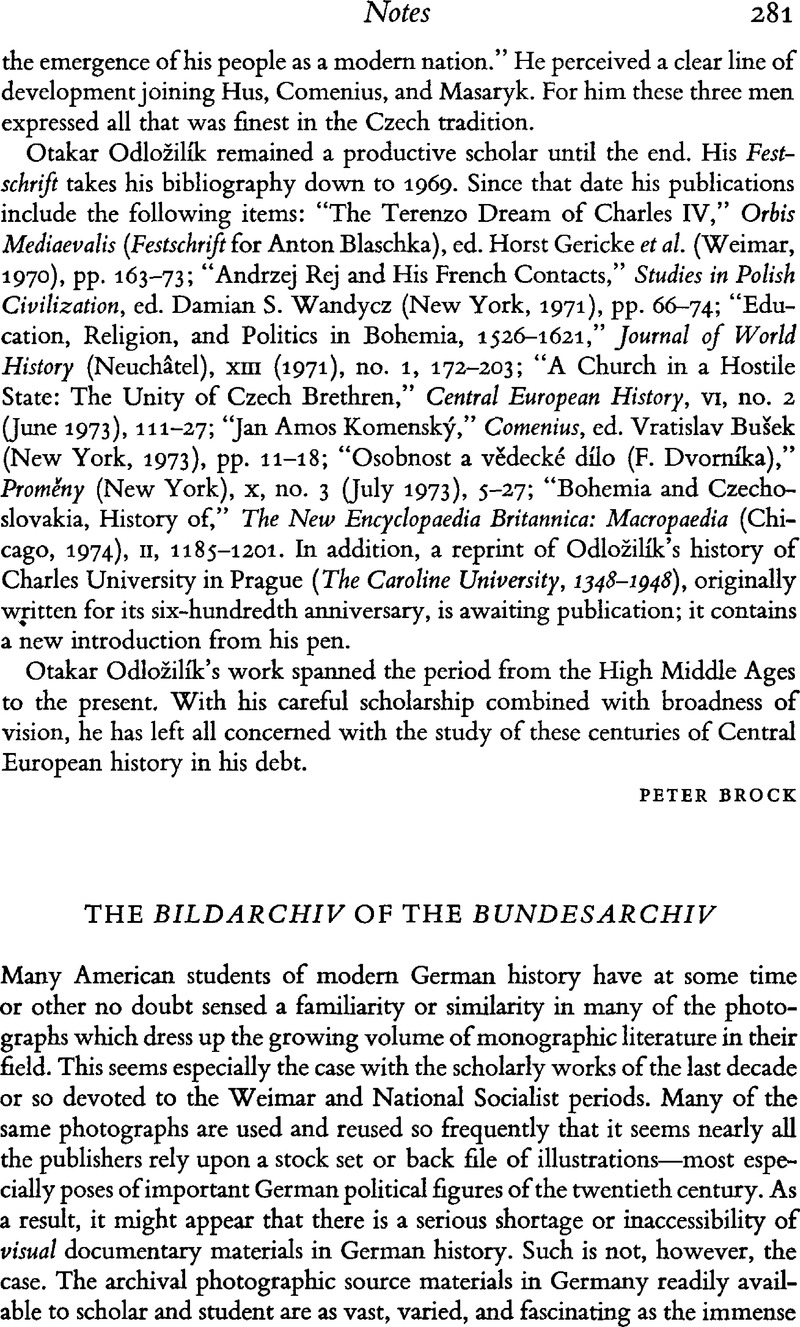No CrossRef data available.
Published online by Cambridge University Press: 16 December 2008

1. One good example of how the quality and variety of the combat photographs in the Bildarchiv can be utilized for publication is Walther, Herbert, Die Waffen SS: Eine Bilddokumentation (Echzell-Bisses: L. B. Ahnert Verlag, 1972).Google Scholar Herr Walther, who is the Bildarchiv specialist for photographs from the National Socialist period, has an encyclopedic knowledge of the archive's holdings and an astonishing ability to identify immediately the scene and subjects of almost any photograph in the Bildarchiv taken between 1923 and 1944. His photo history of the Waffen SS, which is flawed in spots as a result of technical sloppiness, is nonetheless the most complete pictorial documentary of the subject that has yet appeared.
2. Probably the most exciting photographic find to come out of the Bildarchiv files is Deschner's, Günther widely acclaimed and best-selling Menschen im Ghetto (Gütersloh: Bertelsmann Sachbuchverlag, 1969).Google Scholar This brilliant work is a photographic history, accompanied by extensive commentary, of the life of the Jewish community in the Warsaw Ghetto under the lengthening shadow of destruction. The majority of the remarkable photographs in the book were reproduced from original negatives found in the PK collection of the Bildarchiv by Professor Dr. Werner Gley and Herr Herbert Walther. These PK photographs, originally thought to be the work of one SS photographer commissioned by Himmler, were shot by two army correspondents of Propaganda Kompanie Nr. 689. Taken between October 1939 and December 1941, they document comprehensively the daily routine of life and work in the Ghetto, and the growing despair and hopelessness in the faces of its inhabitants. For the historian, these pictures transmit more vividly than any text possibly could a devastating and gripping image of one of the century's most horrible tragedies.